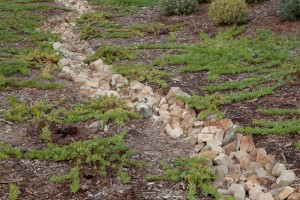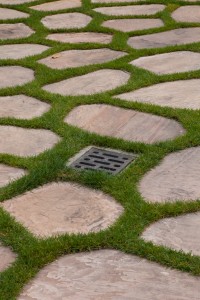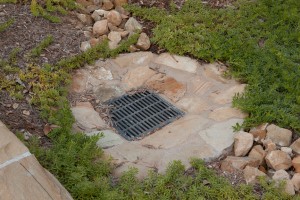7 Water Drainage System Tips
Water drainage is one of the most important phases of a landscape design and installation project. Why?
Water drainage in your landscaping is as important as landscape irrigation. Sometimes water drainage gets overlooked and not implied. Proper water drainage is important to residential landscapes because it solves many water-related problems caused by; excessive rainfall, standing water and soil erosion.Effective draining can also help prevent foundation damage due to earthquakes.
- Excess amounts of water in landscaped gardens and lawns may result in plant diseases and that can cause the death of expensive flowers and trees which you have watch for years grow to look great and become central focal points throughout your yard.
- When there is no landscape water drainage in place, homeowners are at risk of damaging their home’s foundation. Landscape water drainage systems are perfect for the removing water away for your structure in areas around your home which are low and prone to flooding. There are various types of landscape water drainage systems available, which can be installed to newly built properties or existing properties to divert water away from buildings.
- Properly designed water drainage systems prevent excess water from overflowing your deck and patios and flowing onto your home or flower beds. Drainage systems transports excess water to prevent muddy patches from forming due after heavy rain. proper drainage reduces the risks of fungal diseases of the lawn and prevents the threat of moss and algae build up on a deck, pavement or driveway. A sufficient deck and patio drainage system will also assist in preventing rotting and eroding of a timber deck or house siding.
- Roof water drainage is another important factor to consider. The proper location of the down pipes from your roof’s gutter system can also protect your landscape. When there is a heavy rain, if you begin to notice excess water collecting around the foundation of your home, it is wise to have your gutters and down pipes checked, and also clean them regularly to prevent blockage. If the water drainage system is unable to handle rate of water flow off the roof and into a drain, the excess water will flood an area and create a large pool of muddy water. Overtime this area will be become useless as it will be difficult to grow grass or plants.
- If you notice, in your lawn, excessive water patches days after heavy rain, this means that a water drainage system is needed. If the neighbor’s property slopes down towards your property, chances are that in heavy rain, the water will flow to the lowest point, which may be in your landscape. Installing French drains will allow the excess water to soak down into the under ground drains and directed to a ditch or soak-away.
- Water Drainage is also important to keep water from seeping into building foundations. This is done by essentially forming a moat around the drainage. The installation method for this use of French drains is to dig the trench four to six feet away from the foundation in a ‘U” Shape. This method catches and pools the water in the trench and drains it away, stopping it from seeping into the foundation.
- Surface drainage is also an component of a landscape drainage system and catches small objects that may fall through the drain inlets. These are known as catch basins, or sumps. Catch basins are part of the storm drain system. Its primary purpose is to trap debris so that they cannot enter the drainage pipes. The catch basin lies right below the grating of a storm drain. It serves as the first step for processing the excess water from heavy rainfall.


For further information and pictures of drainage systems, please call us at 805-966-4518





